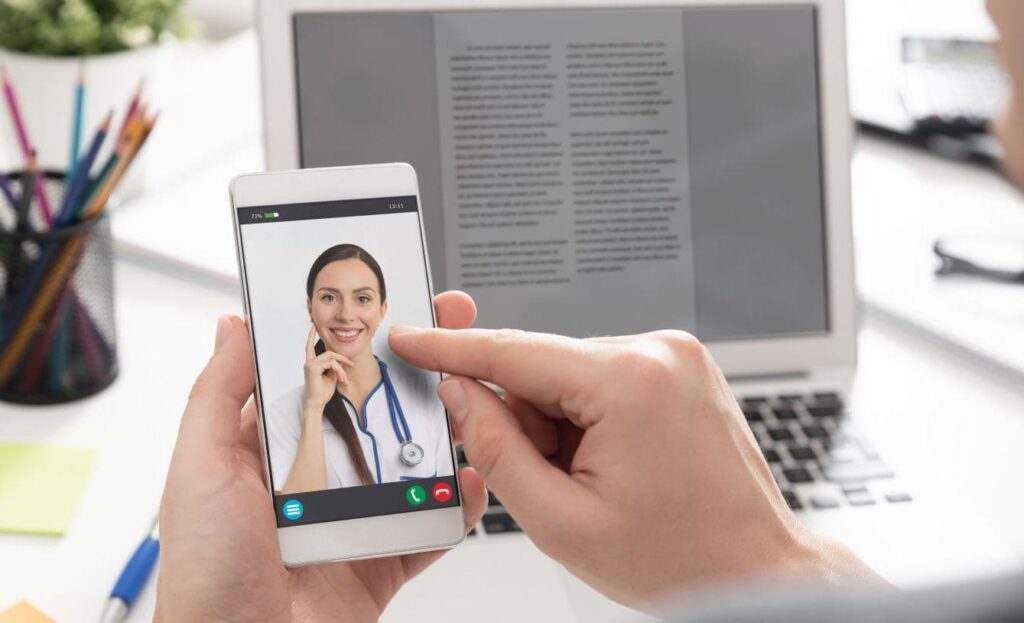Introduction
Nowadays, technological advancements have changed how healthcare systems and practitioners deliver their services due to the integration of electronic information and telecommunication technologies in providing clinical care. Various technologies, such as artificial intelligence (AI), virtual reality (VR), telerobots, the Internet of Things (IoT), and 3D printing, have guaranteed the provision of quality healthcare services remotely. In particular, telemedicine is revolutionizing patient care by enhancing healthcare services accessibility, making it easy for physicians to track patients’ progress while saving on cost.
Promoting Healthcare Accessibility
At first, telemedicine ensures that patients can acquire different types of care without traveling to a healthcare facility. For example, the use of telemedicine suggests that healthcare providers reach patients living in isolated locations, including those with physical or developmental disabilities, incarcerated people, and elderly individuals (Stoltzfus et al. 2). In this case, telemedicine guarantees that geographical locations do not hinder the acquisition of healthcare services. Moreover, patients do not require to travel to get the necessary care service, and this aspect reduces mortality rates that occur due to delayed waits. Today, patients can experience reduced wait times instead of in-person appointments due to telemedicine (Stoltzfus et al. 2). Some individuals may have tight schedules, which cause inconveniences in attending healthcare facilities. In such scenarios, virtual visits ensure that patients can get medical attention easily, depending on their schedule, without leaving work or home. Therefore, telemedicine is revolutionizing patient care by making it easy for patients to access care regardless of geographical location.

Making It Easy to Track Patients’ Progress
Secondly, telemedicine revolutionizes patient care by allowing practitioners to track patients’ developments over long distances. For instance, telemedicine allows physicians to manage severe health problems and track patients at home (Haleem et al. 4). Patients’ mismanagement cause anxiety among physicians influencing them to monitor their progress during treatment. Patients might be required to stay at healthcare facilities longer for monitoring, whereas others need to make several follow-up visits. However, telemedicine simplifies access to patients while they are at their homes, and healthcare practitioners can do their job without delays. Through telemedicine, healthcare personnel can track how and when patients are taking their medications, and technology permits the transmission of essential information relating to glucose levels, blood pressure, and pulse rhythm (Haleem et al. 8). In this case, telemedicine allows patients to remain at their community as providers track their recovery process reducing congestions at healthcare facilities. Therefore, telemedicine guarantees easy follow-ups on patients, enhancing the quality of service they get.
Reducing Healthcare Costs
Lastly, patient care is being revolutionized through telemedicine by reducing the cost of accessing healthcare services. Telemedicine can reduce patient costs significantly, both time-related and monetary (Evers et al. 1). In this case, some individuals find it challenging to access healthcare services to costs. Telemedicine promotes remote access to physicians, saving money on hospital set-up and traveling to patients. Besides, telemedicine saves on costs to healthcare facilities since it increases efficiency while reducing the number of remote practitioners. Unfortunately, healthcare costs are a major challenge impacting patient care. Hence, telemedicine reduces costs, ensuring that most individuals easily access patient care.
Conclusion
Telemedicine is revolutionizing patient care by reducing expenses, making it easy for practitioners to track patients’ progress, and enhancing accessibility. Telemedicine ensures that people can access medical services remotely. Besides, it allows physicians to contact their patients at home, making it easy to assess their recovery process. In turn, telemedicine reduces the costs of traveling and utilizing hospital equipment. Thus, people need to know about using telemedicine and its advantages to get the quality care that they deserve.
Works Cited
Evers, Emily C., et al. “Perceptions of Telemedicine and Costs Incurred by a Visit to a General Infectious Diseases Clinic: A Survey.” Open Forum Infectious Diseases, vol. 9, no. 3, 2022, pp. 1-9, doi: 10.1093%2Fofid%2Fofab661.
Haleem, Abid, et al. “Telemedicine for Healthcare: Capabilities, Features, Barriers, and Applications.” Sensors International, vol. 2, 2021, pp. 1-12, doi: 10.1016%2Fj.sintl.2021.100117.
Stoltzfus, Mason, et al. “The Role of Telemedicine in Healthcare: An Overview and Update.” The Egyptian Journal of Internal Medicine, vol. 35, no. 1, 2023, pp. 1-5, doi: 10.1186/s43162-023-00234-z.


